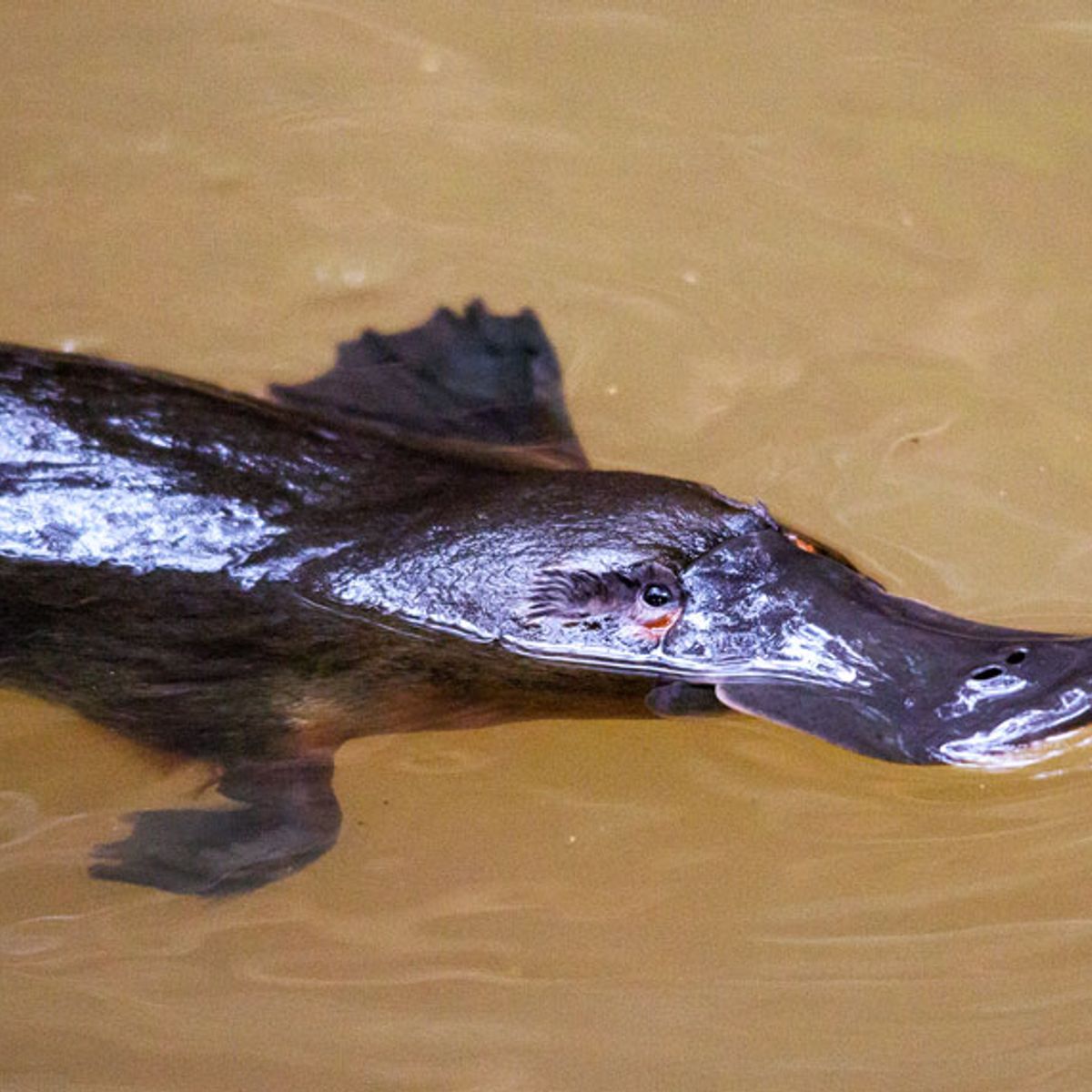

The uniqueness and rarity of platypus features ( sensu Pavoine et al. Platypuses have a unique combination of features, including oviparity, venomous spurs in males, electroreception used to locate freshwater macroinvertebrates, biofluorescent pelage, and multiple sex chromosomes (five pairs instead of one 2, 3, 4). The semi-aquatic platypus ( Ornithorhynchus anatinus), along with echidnas, belong to the order Monotremata, the most species-poor ( n = 5) and most basal branch of mammals, which diverged from marsupials and eutherians 187 Mya 1. Mitigation strategies, such as building of by-pass structures and translocation between upstream and downstream of the dam, should be considered in conservation and management planning. This study provides evidence of gene flow restriction, which jeopardises the long-term viability of platypus populations when groups are fragmented by major dams. Furthermore, F ST between groups was correlated with the year in which the dam was built, increasing by 0.011 every generation, reflecting the effects of these barriers on platypus genetics. This indicates that major dams represent major barriers for platypus movements. Genetic differentiation ( F ST) across dams was 4- to 20-fold higher than along similar stretches of adjacent undammed rivers F ST across dams was similar to differentiation between adjacent river systems. Here we examined disruption of gene flow between platypus groups below and above five major dams, matched to four adjacent rivers without major dams. Nevertheless, uncertainties remain whether dams are barriers to movement, thus limiting gene flow and dispersal, essential to evolution and ecology. Although spending most of their time in the water, platypuses can move over land. Molecular Ecology Resources published by John Wiley & Sons Ltd.The evolutionarily unique platypus ( Ornithorhynchus anatinus) has experienced major declines and extinctions from a range of historical and recent interacting human-mediated threats. The high-quality reference genome reported here provides a solid molecular basis for further study of the blue king crab's development and environmental adaptation.Īdaptation blue king crab evolution genome. Furthermore, gene families related to developmental pathways, steroid and thyroid hormone synthesis, and inflammatory regulation were expanded in the genome, suggesting that these genes contributed substantially to the environmental adaptation and unique body plan evolution of the blue king crab. Population history analyses indicated that the effective population of the blue king crab declined sharply and then gradually increased from the Cretaceous and Neogene periods, respectively.

Phylogenetic analysis showed the blue king crab to have a close relationship with the Eubrachyura crabs, from which it diverged 272.5 million years ago. Genome assembly assessment showed that 96.54% of the assembled transcripts could be aligned to the assembled genome. Furthermore, we determined that the large genome size can be attributed to the insertion of long interspersed nuclear elements and long tandem repeats. Here, we assembled the first chromosome-level blue king crab genome, which contains 104 chromosomes and an N50 length of 51.15 Mb. However, a high-quality reference genome for the king crab has not yet been reported. The blue king crab, Paralithodes platypus, which belongs to the family Lithodidae, is a commercially and ecologically important species. 8 Department of Biological Sciences, Faculty of Science, National University of Singapore, Singapore, Singapore.7 National Engineering Research Center for Facilitated Marine Aquaculture, Zhejiang Ocean University, Zhoushan, China.6 National Engineering Laboratory of Marine Germplasm Resources Exploration and Utilization, Zhejiang Ocean University, Zhoushan, China.5 Institute of Oceanology, Chinese Academy of Sciences, Qingdao, China.



 0 kommentar(er)
0 kommentar(er)
